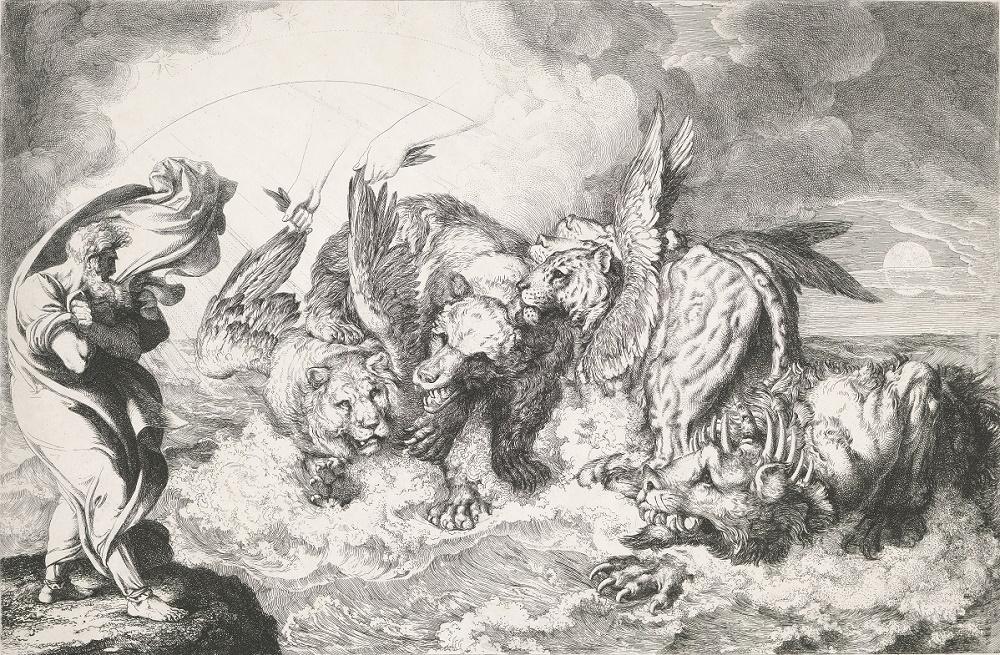DANIEL CHAPTER 7 CLEAR AND PLAIN

When the Interpretation of a Chapter in the Bible Differs
Almost Completely from Ubiquitous Conventional Wisdom
by Mark Mountjoy
Preamble
Have you ever wondered about the connection between Daniel chapter 7 and Jesus’ ascension to heaven? Many Christians believe these events are closely related, but let’s take a closer look. Daniel 7 is filled with vivid descriptions of strange beasts, wars, and judgments. It paints a picture of chaos and conflict. On the other hand, Jesus’ ascension on Thursday, 19 Iyar 3794 (May 8, AD 33), was a peaceful event.
So, here’s a question to ponder: What in those 28 verses of Daniel 7 actually points to the calm day when Jesus returned to heaven? When you read the chapter, do you see any clear signs that it’s talking about the ascension?
Now, think about this: Doesn’t the Book of Revelation, with its dramatic visions and epic battles, seem to match Daniel 7 much more closely? It’s puzzling that many commentators in the Church connect Daniel 7 to the ascension instead of seeing it as a description of Jesus’ second coming. Why do you think this is? Could it be that we’ve misunderstood something important and critical about Daniel’s Night Vision prophecies? Would Daniel really be upset about our Lord returning to God the Father (as Jesus did in Acts 1:9) or would he rather be troubled by the behaviour of Judæa during the AD 66-70 civil sedition, which happened around the abomination of desolation and the Zealot sullying of the Second Temple (Revelation 11:1-8 and 13:1-6; 17:11-17)?
IN 556 BC, DURING THE FIRST YEAR of King Belshazzar’s reign in Babylon, the prophet Daniel received a vivid night vision, which is recorded in chapter 7 of the book of Daniel.
Now, let’s proceed with summarizing the content of the chapter without interpretation:
Daniel sees four great beasts emerging from a turbulent sea:
The first resembles a lion with eagle’s wings
The second is like a bear, raised up on one side, with three ribs in its mouth.
The third looks like a leopard with four wings and four heads.
The fourth is a terrifying, powerful creature with large iron teeth and ten horns.
While observing the fourth beast, Daniel notices a small horn growing among the ten, uprooting three of the original horns.
This small horn has eyes like human eyes and a mouth speaking boastfully.
Significantly, the vision then shifts to a courtroom scene:
The “Ancient of Days” takes his seat on a fiery throne; thousands attend him and myriads stand before him; the court sits in judgment and books are opened (it is judgment day).
The fourth beast is slain due to the boastful words of the horn, and its body is destroyed in fire.
Daniel then sees “one like a son of man” approaching the Ancient of Days. This figure is given authority, glory, and sovereign power over all peoples and nations.
Daniel is troubled by the vision and approaches one of the attendants in the dream for interpretation. The attendant provides a brief explanation:
The four beasts represent four kings or kingdoms that will rise from the earth.
The saints of the Most High will receive the kingdom and possess it forever.
Daniel asks specifically about the fourth beast and its horns. He is told:
This kingdom will be different from the others and will devour the whole earth. The ten horns are ten kings who will come from this kingdom. Another king will rise, subdue three kings, and speak against the Most High.
This king will oppress the saints for a time, times, and half a time (three years and six months, or forty-two months). Eventually, the saints will be victorious and possess the kingdom.
The chapter ends with Daniel deeply troubled by his thoughts, but keeping the matter to himself.
Related
Objections to Atavist Eschatology
[Click the image]
The Image of the Abomination of Desolation

